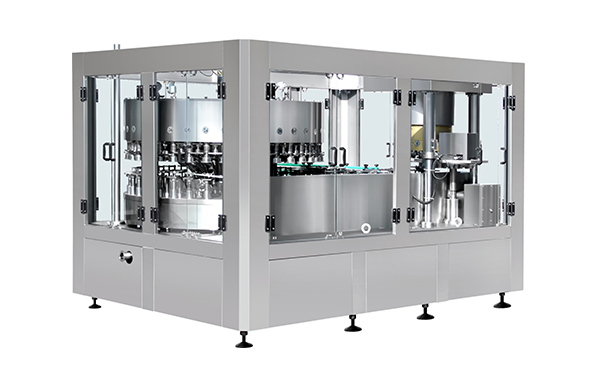The working principle of aerosol is to fill the original liquid (active ingredient) and liquefied gas or compressed gas into the aerosol tank at the same time, and seal it with a valve. When in use, press the actuator, the valve opens, and the liquid substance in the tank is pushed up into the valve body through the liquid introduction tube under the pressure of the gas phase propellant, and then enters the valve core through the valve core metering hole to the actuator Ejected from the nozzle. The atomization process of the spray when it leaves the nozzle is the result of a comprehensive effect. soda can filling machine When it is sprayed from the nozzle at high speed, the propellant vaporizes rapidly to form droplets, and then the pressure of the liquid phase propellant contained in the droplets disappears. , Evaporate into the gas phase immediately.

After the original liquid is discharged, the reduced volume in the aerosol tank can be replenished by the vaporization of liquefied gas, so as to keep circulating until the original liquid is completely sprayed. Figure 2-1 is a cross-sectional view of a typical space aerosol product. If you rely on compressed air as the driving force of the original liquid, because this gas is almost insoluble in the active ingredient, when the active ingredient is pressed out of the aerosol can, it can completely maintain its original shape.
When liquefied gas is used in the aerosol canister, part of the liquefied gas is vaporized in the sealed container, and most of the rest is still liquid and kept in equilibrium. At this time, the gas phase is on the top of the tank, the liquid phase is on the bottom of the tank, and the active ingredients are dissolved or dispersed in the liquid phase. The gas phase not only exerts pressure on the tank wall, but also exerts pressure on the liquid. Therefore, when the valve is opened, the active ingredient can be pressed from the downwardly extending tube to the valve outlet, and form a spray shape or foam shape when it is automatically pressed out, or it may be liquid or slurry, which is related to the nature of the pressurized substance as the driving force. And the structure of the valve. If the boiling point of the liquefied gas used is much lower than room temperature or ambient temperature, it can immediately vaporize at this time, causing the effective ingredients to be sprayed into the air to form fine mist particles. If the active ingredient needs to be sprayed on the surface of the body, the aerosol must be vaporized near or in contact with the surface of the body to leave the active ingredient. This can be adjusted appropriately according to the different boiling points, dosages and solute consistency of various liquefied gases. Similarly, if the shape of the extrudate in the aerosol can is foam, the main difference is that the foam product is a solution rather than an emulsified body. When the valve is opened, due to the expansion of the liquefied gas, the emulsion produces many small bubbles, forming a foam shape. If the powder is suspended in the liquefied gas, when the valve is opened, the powder and the liquefied gas are sprayed out at the same time, and the liquefied gas quickly vaporizes and volatilizes, leaving the powder on the surface of the donor body
 简体中文
简体中文 English
English

